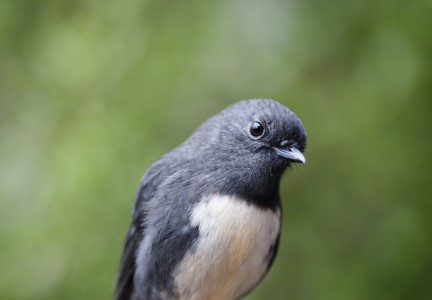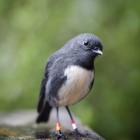
The Engagement & Advisory Group
Stewart Bull - Rakiura Tītī Committee
Ko Takitimu te Waka
Ko Takitimu me Hananui nga mauka
Ko Te Anau me Manapouri nga roto
Ko Waiau te awa
Ko Te Ara a Kewa te moana
Ko Rakiura te moutere rangatira
Ko Taukihepa moutere te Mahi kai nga taonga Tītī
Ko Takutai o Te Tītī me Te Akau nga Marae
Ko Kai Tahu, Kati Mamoe Waitaha hoki nga iwi
Ko Murihiku te Rohe
Ko Stewart Bull ahau
Current positons held:
Chairman Rakiura Tītī committee
Chairman Oraka-Aparima Runaka Inc
Chairman Te Ao Marama Inc
Current Member of:
Rakiura Tītī Island Administering Body
Fiordland Marine Guardians
Predator Free Rakiura
Southland Conservation Board
Whenua Hou Committee
Kaitiaki Roopu
Tangata Tiaki Kaitiaki
CRA8 Management Board
Fish Mainland
I was born and bred in Murihiku (Southland), having spent my whole life here with the exception of four years. I spent two years in Victoria Australia, employed in the scallop fisheries industry at Port Phillip Bay, Bass Strait and across to Flinders Island in South Eastern Australia, and a couple of years employed in Christchurch working in the construction industry pipe fitting and engineering.
I spent a couple of years as a teenager employed in the crayfishing industry out of Riverton to Milford.
I was employed on stage one, of the building of the Tiwai aluminium smelter. I started on the building of the wharf, became a rigger, working my way throughout most buildings. I ended as last contractor off site of stage one, as I was the union rep for Wilkins and Davies.
For several years, I was a sandblaster and industrial spray painter, mainly on a mobile unit around the district of Southland. I also spent a couple of years employed as a roustabout on Penrod oilrig for Hunt Petroleum.
For approximately 16 years, I was back to the fishing industry, trawling, set netting, crayfishing in and around Rakiura and the Fiordland coastline. This was an interesting era, as we were moving from open slather into the quota management system.
My mahi of fishing and mutton birding, etc. sparked an interest in me, as I had been noticing things going on around me that didn’t seem quite right, which led me to the beginnings of my involvement in the Ngāi Tahu Iwi political scene.
I began by helping out the Aparima Māori committee in Riverton. From that came an interest examining, exploring, probing and enquiring in the resource management arena. This was of huge interest to me as I saw it as an opportunity to make things right. I believe that was where I found my niche.
The significance of involving myself with iwi affairs afforded me to be in a privileged position of being included in the negotiations team of the Mahinga Kai component of the Ngāi Tahu deed of settlement, i.e. fisheries, return of Titi Islands, taonga species and much more.
From that point on, I was appointed to the board of Te Runganui o Tahu Inc. From that came the appointment to the board of Te Runanga o Ngāi Tahu, this was at the time of the dissolution of the Ngāi Tahu Trust Board.
I spent approximately eighteen years on the Board of Te Runanga O Ngāi Tahu, a huge learning curve where my introduction into the world of governance began. In the same period, I had the honour of being the Chairman of Oraka-Aparima-Runaka Inc. One of the four Papatipu Runaka in the rohe of Murihiku. Oraka-Aparima-Runaka Inc. has always leaned into the field of environmental management as long as I have known.
Of importance, a good number of those participating at the development of the structure, were practitioners in the natural environment and as such had a natural inclination - understanding of sustainable utilization of natural resources. These included participants from the Fishing Industry, Muttonbirders, Farmers, and Mahinga Kai, etc.
Whilst all this was occurring, I became an active member of the management of the Tītī Islands. There was the time when all the Islands were managed under one committee, but from the Ngāi Tahu settlement came the requirement to manage the Beneficial Islands separately from the ex-crown islands and so the Rakiura Tītī Island Administering Body inception began,
The Tītī islands also gave Rakiura Māori early interactions with Lands and Surveys and then with the Department of Conservation and others, dealing with species management. The invasion of the rats onto the Tītī Islands in the mid-sixties was certainly a wake-up call to the Tītī community and the wildlife services of the time.
The rescue of tīeke (saddleback) has been a big success story from that occurrence, and consequently, used as a template to follow for the salvage-breeding of endangered species on island sanctuaries.
The Tītī Islands once again are seen as the jewels in the crown as these island sanctuaries have accomplished pest free status. This allows for the breeding and repopulation of endangered species of not only the Tītī islands, but other places as well.
This shows a clear example of what can be accomplished, and how to achieve the enhancement of various species.
It was through this involvement-learning that I gained the understanding of the need to consider the big picture, not just parts of the picture, because, if there is a flaw anywhere in that picture, then so is the whole picture flawed.
So it is with those thoughts in mind I have become involved with Predator Free Rakiura, we have seventy per cent of the Tītī Islands pest free and before we can complete that job we need to clear Rakiura of all unwanted pests as well, as the rats that keep moving between Rakiura and the Tītī Islands.
My vision is that in the near future we can erase the FLAWS (removal of pest species) to make Rakiura into an island sanctuary, suitable to receive-accommodate-enhance those species that rightfully belong in this place. Nga Taonga Rakiura.
Mo Tatou, a mo ka uri a muri ake nei
In June 2018, I was the recipient of the QSM for services to Māori Community and Environment.

